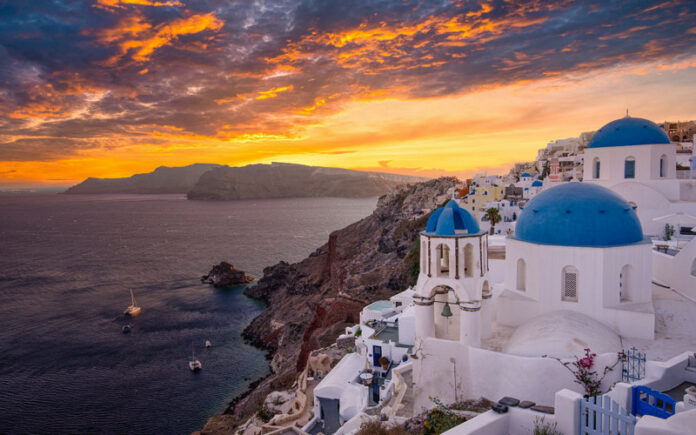1Santorini’s Caldera and Sunset in Oia

Santorini is one of the most iconic Greek islands, known for its stunning caldera, formed by a volcanic eruption thousands of years ago.
The island’s white-washed houses, blue-domed churches, and crystal-clear waters create a picture-perfect landscape. The village of Oia, perched on the edge of the caldera, offers some of the most breathtaking sunsets in the world. Visitors gather every evening to witness the sky turn vibrant shades of orange, pink, and purple as the sun sinks into the Aegean Sea.
Why it’s a highlight: Santorini’s caldera and Oia’s sunsets are world-famous, offering a magical and unforgettable experience.





